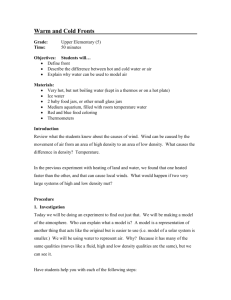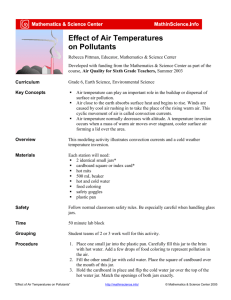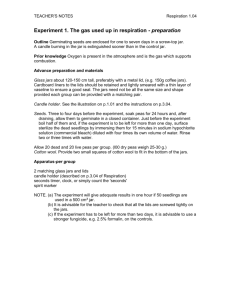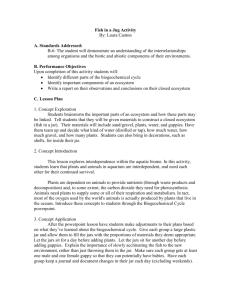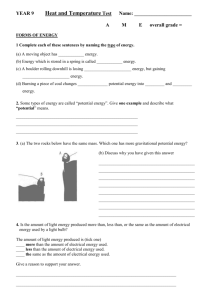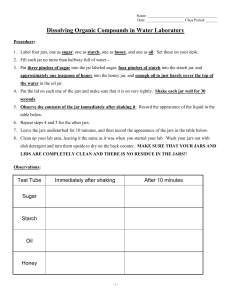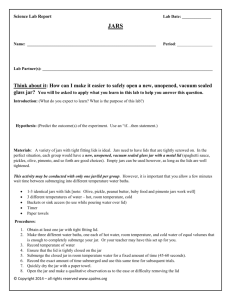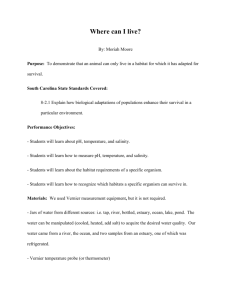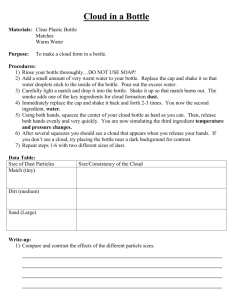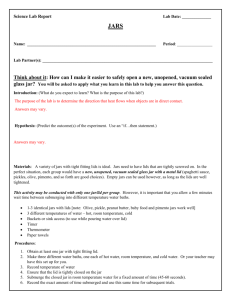Word doc version - Southwest Ohio Air Quality Agency
advertisement
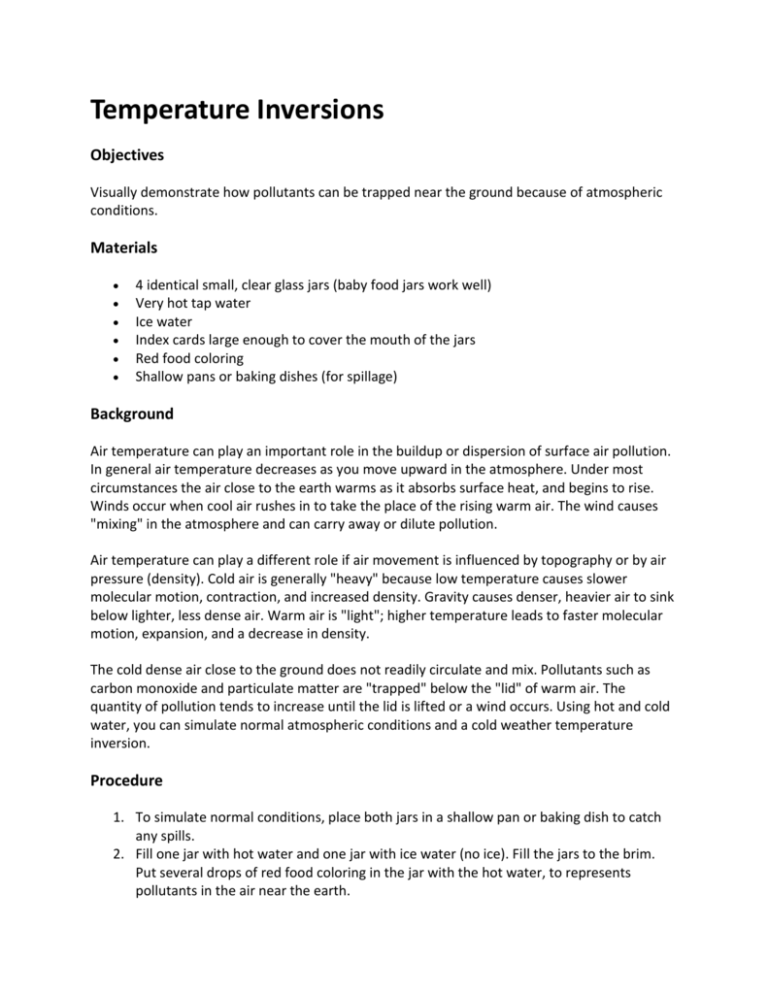
Temperature Inversions Objectives Visually demonstrate how pollutants can be trapped near the ground because of atmospheric conditions. Materials 4 identical small, clear glass jars (baby food jars work well) Very hot tap water Ice water Index cards large enough to cover the mouth of the jars Red food coloring Shallow pans or baking dishes (for spillage) Background Air temperature can play an important role in the buildup or dispersion of surface air pollution. In general air temperature decreases as you move upward in the atmosphere. Under most circumstances the air close to the earth warms as it absorbs surface heat, and begins to rise. Winds occur when cool air rushes in to take the place of the rising warm air. The wind causes "mixing" in the atmosphere and can carry away or dilute pollution. Air temperature can play a different role if air movement is influenced by topography or by air pressure (density). Cold air is generally "heavy" because low temperature causes slower molecular motion, contraction, and increased density. Gravity causes denser, heavier air to sink below lighter, less dense air. Warm air is "light"; higher temperature leads to faster molecular motion, expansion, and a decrease in density. The cold dense air close to the ground does not readily circulate and mix. Pollutants such as carbon monoxide and particulate matter are "trapped" below the "lid" of warm air. The quantity of pollution tends to increase until the lid is lifted or a wind occurs. Using hot and cold water, you can simulate normal atmospheric conditions and a cold weather temperature inversion. Procedure 1. To simulate normal conditions, place both jars in a shallow pan or baking dish to catch any spills. 2. Fill one jar with hot water and one jar with ice water (no ice). Fill the jars to the brim. Put several drops of red food coloring in the jar with the hot water, to represents pollutants in the air near the earth. 3. Place the index card over the top of the jar with the cold (clear) water and quickly flip the jar on top of the jar with hot, polluted (red) water. Make sure the openings of the two jars are perfectly aligned and hold them in that position while you quickly but carefully pull the index card out. Let the Jars stand. 4. Inversion conditions: Repeat the above procedure, except in this case place the red food coloring in the jar of cold water. Then place the index card over the top of the jar with the hot (clear) water and invert it over the jar full of cold, polluted (red) water. Let the jars stand. 5. What happens in the first instance? The hot (red) and cold (clear) water mix immediately, moving some of the red food coloring (pollutant) into the upper jar, which becomes red. At the same time the red (pollution) in the lower jar is diluted. This mixing of the warmer, colored water shows how warm air near the earth can move upward into the colder upper atmosphere and disperse pollutants. In the second instance, the cold (red) water is trapped and can't escape upward. The jar of hot water on top (clear) has "trapped" the dirty (red) cold air, just as warm air can trap a layer of cold, polluted air and create unhealthful air quality conditions. 6. Ask the students to identify sources of pollution which might particularly contribute to cold air (wintertime) inversions.
